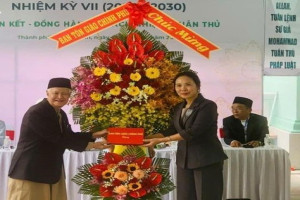
Iraqi Yazidis light candles and paraffin torches outside the 4,000-year-old Lalish temple in northern Iraq on April 18, 2017, during a ceremony to celebrate the coming New Year.

The Yazidis are an independent ethno-religious group, with the vast majority (estimated at about 1.6 million) living in the north of Iraq

They practice an ancient faith, which they claim is the world's oldest religion. During the New Year celebration, they commemorate the arrival of the light into the world.

Yazidis pray during annual celebrations of New Year, one of the three main Yazidi feasts, at Lalish Temple in Sheyhan district of Mosul, Iraq.

Traditionally, the Yazidi New Year celebration falls on Wednesday in April. It is also known as Chwarshaba Sor, which means Red Wednesday in Kurdish.

The ceremony starts on Tuesday evening in Lalish Temple, the main Yazidi temple 60 kilometers north of Mosul. Candles are lit in all corners of the temple

In August 2014, thousands of Yazidis were killed and up to 7,000 Yazidi children and women were enslaved by Daesh militants after they took over Sinjar, a town in Iraqi Kurdistan before it was liberated in December 2015.

Massacres carried out by militants against the minority were qualified as genocide, the United Nations said.

The Yazidi minority continues defending its faith and observing its religious events to preserve the ethno-religious identity and heritage of one of the most ancient peoples.

To date, the Syrian Democratic Forces have already liberated 2,900 Yazidi, including 953 women, 684 children and 757 young ladies. At least 3,000 captured Yazidi are still missing.

The operations, launched in November 2016, are part of the US-backed campaign of the Syrian Democratic Forces, codenamed the Wrath of Euphrates (also referred to as Euphrates Rage), to liberate Syrian and Iraqi cities from Daesh militants.
Source: https://sputniknews.com




